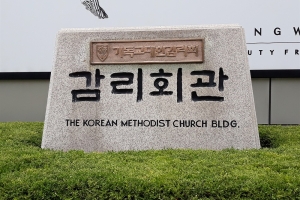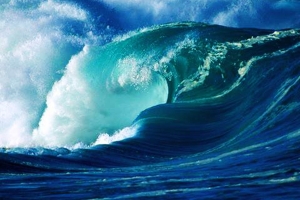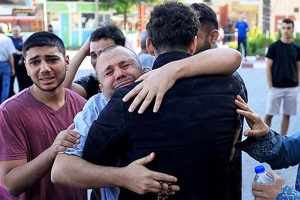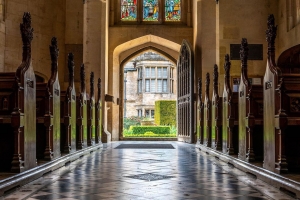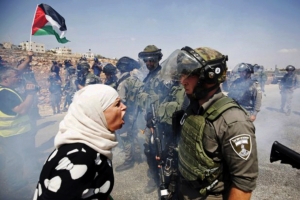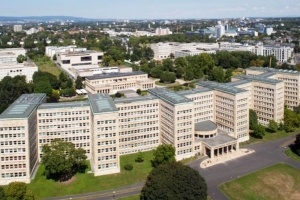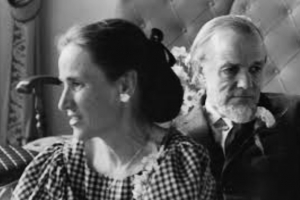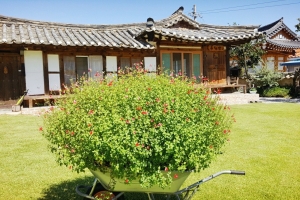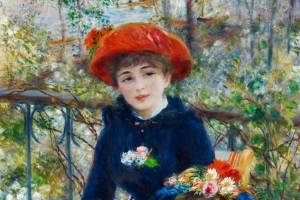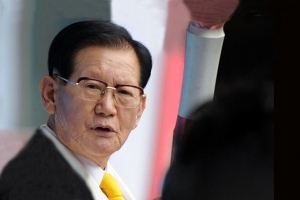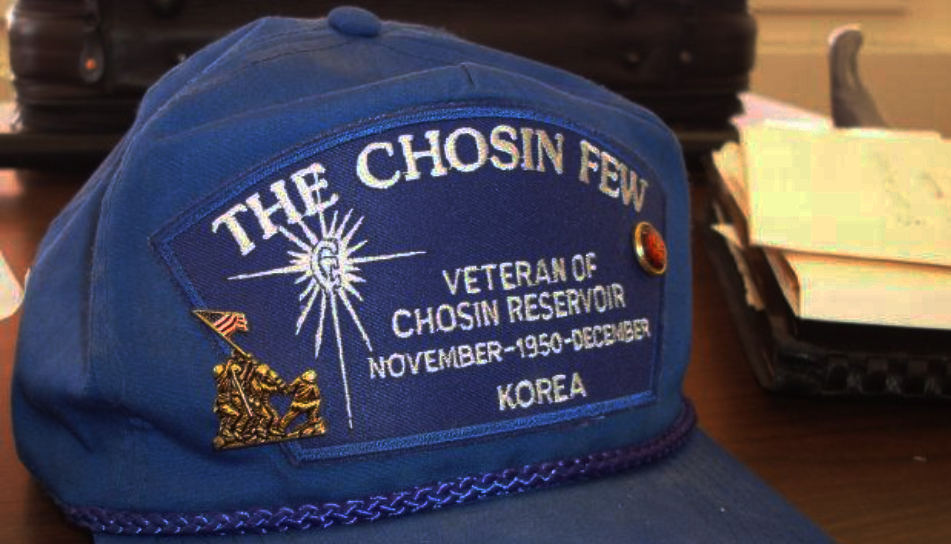
장진호 전투와 '고토리의 별'
장진호 전투는 지금부터 70년 전에 발생한 6.25전쟁에서 가장 치열했던 전투였다. 북한군이 유엔군에게 계속 밀리면서 임시 수도를 평양에서 압록강 근처의 강계로 옮기게 된다. 미해병 1사단은 낙관적인 전망을 하고 장진호 지역까지 북진을 한다.
1950년 11월 14일, 장진호 근처의 하갈우리에 미군이 들어와서 하갈우리장로교회에서 감사예배를 드렸다. 해방 후 공산치하에서 몰래 숨어서 예배드리던 하갈우리장로교회 교인들이 숨겨 놓았던 교회 종을 가지고 나왔다. 교인들은 11월 23일 주일에는 추수감사주일로 미군들과 함께 지켰는데, 11월 30일에 장진호 지역에 미군 병력의 10배가 넘는 중공군 6개 사단의 12만의 포위망이 구축되었다는 사실을 확인하게 된다.
그래서 11월 31일 주일에 미군은 퇴각하기 전 철수 예배를 드렸는데, 기독교인들을 포함한 피난민들이 함께 따라가겠다고 나섰다. 그들의 신분이 완전히 노출되어서 공산군이 다시 들어오면 처형 1순위가 될 것이기에 미군을 따라서 남한으로 내려가고자 했다.
맥아더 장군은 스미스 사단장에게 비행기로 철수하라고 명령했다. 그러나 비행기로 철수할 경우 활주로를 지키는 최후의 병력과 함께 자신들을 따라 남한으로 가겠다고 하는 기독교인들과 피난민들은 함께 갈 수 없으니 육로로 퇴각하기로 결정한다. 그 유명한 장진호 전투는 이렇게 시작되었다.
장진호는 북한에서도 가장 추운 개마고원에 위치해 있다. 전투가 진행되었던 2주간 동안 평균기온은 영하11도, 가장 추운 날의 오전 기온은 영하 45도까지 내려갔다. 물도 얼고 전투식량도 얼고, 기관총의 노리쇠도 얼려버리는 강추위였다. 중공군은 미군 하나만 죽일 수 있다면 열 명이 죽어도 괜찮다면서 제일 앞에서 공격하는 군인들은 총도 없이 막대기수류탄 2개씩 양 손에 들고 달려왔다고 한다.
하갈우리에서 출발한 미해군 병력은 고토리까지 왔다. 고토리와 진흥리 사이를 잇는 수문교가 끊어진 상태였다. 다리를 연결해야 하는데, 장비가 없어서 몰살당할 위기에 처했다. 비행기로 장비를 보급 받아야 하는데, 기상 여건은 도저히 비행기가 뜰 수 없는 상황이었다. 이 때 미군과 함께 있던 기독교인들이 무릎 꿇고 기도하기 시작한다. 그런데 칠흑같이 어두운 밤하늘에 별 하나가 떠오른다.
이 별로 인하여 다음 날 맑은 날씨를 기대할 수 있게 된다. 그 다음 날 미군은 비행기가 떠서 무사히 철수할 수 있었다. 당시 그리스도인들과 미군이 함께 기도하는 장면이 미 해병대 박물관에 “고토리의 별”(The Star of Kotori)이란 제목의 그림으로 전시 돼 있다. 그리고 이 별은 장진호전투에 참전했던 미해군 1사단 전우회의 공식마크가 된다. 절망적인 상황에 모든 것을 주께 맡긴 성도들은 주께서 최선의 길로 인도하시는 모습을 바라볼 수 있었다.
해방 후 5년간 공산치하에서도 목숨을 걸고 신앙을 지켰고 또 신앙의 자유를 찾아서 정든 고향을 떠나 낯선 타지로 향하는 성도들 앞에 나타난 끊어진 다리는 실로 가슴이 무너지는 일이었다. 그러나 그들은 사망의 음침한 골짜기로 다닐지라도 함께 하시며 인도하시는 주님의 손길에 모든 것을 맡겼다. 그날 밤 떠오른 고토리의 별은 그들에게 주님의 인도하시는 손을 바라보게 했다.
이 전투에서 미해군 1사단은 중공군 7개 사단을 궤멸시킴으로 중공군의 함흥진출을 2주간 지연시켰고 그 결과 흥남철수작전을 성공으로 이끌 수 있었다.
이 때 장진호를 철수하는 미해군 1사단을 따라 흥남까지 온 기독교인들과 피난민이 4,500여명이었다. 흥남 부두에 모였던 10만 명의 피난민 중 기독교인이 무려 95,000명이나 되었다. 자신들의 신분이 완전히 노출되었기 때문에 유엔군과 국군을 따라서 함께 흥남으로 왔던 것이다.
그리고 장진호 전투에서 빼놓을 수 없는 한국군 부대가 있었으니, 경찰로 구성된 화랑부대였다. 한국 경찰은 유엔군에 배속되어 함께 전투에 참여했었는데, 장진호 전투에도 화랑부대의 1개 소대가 기관총부대로 참전하여 미해군 1사단의 철수작전에 큰 공을 세웠다.
11월 27일부터 시작된 장진호전투에서 미해병 1사단을 비롯한 유엔군은 1만 7천명의 사상자가 발생하는 피해를 입었다. 사망자 1,029명, 실종자 4,894명, 부상자 4,582명, 동상 등 비전투요인에 의한 사상자 7,328명이다.
장진호 전투는 미군의 역사에서도 유례를 찾아 볼 수 없을 만큼 큰 피해를 입은 전투였다. 그래서 장진호 전투에서 살아남은 자들을 가리켜 Chosin Few로 부른다(당시 유엔군이 사용한 지도가 일제 치하에 만들어진 것이었기에 일본식 발음으로 장진을 초신으로 불렀다). 살아 돌아온 자가 극히 적었다는 의미다. 특별히 선택된 자만 살아남았다는 의미로 Chosen Few로 부르기도 한다.
그들은 전쟁이 끝나고 만날 때마다 “너 이제 몸 좀 녹았냐?”라는 말로 서로 농담을 주고받았다고 한다. 미군은 장진호전투를 계기로 일명 스키파카로 불리는 방한복을 개발, 보급했다고 한다.
장진호전투의 극적인 승리와 고토리의 별은 이 땅을 향한 주님의 놀라운 은혜를 보여준다. 해방 후 북한에서 5년 동안 숨어서 신앙을 지켜온 신자들이 남쪽으로 내려오면서 한국교회의 부흥의 초석이 되어주었다.
김대운 목사(경성교회)
Star of Koto-ri: Symbol of Chosin Few
By Sgt. Richard W. Holtgraver Jr. | | December 7, 2001/ MARINES
MCB HAWAII, Kaneohe Bay, Hawaii --From the time they enter boot camp, until the day they die, Marines are bombarded with stories of great battles the Marine Corps has been involved in, and arguably one of the greatest battles of American military history was the Chosin Reservoir.
The Marines who participated in that two-week struggle for survival, in the freezing North Korean landscape, faced overwhelming odds highlighted by minus-40 degree temperatures and surrounded by an enemy who outnumbered them almost 8 to 1.Many stories surround the epic 14-day battle, but one stood out clearly in the minds of the Marines from the 1st, 5th and 7th Regiments of the First Marine Division.So inspirational was the event that the surviving members, who would later form The Chosin Few, would incorporate it as their logo.
It's the story of a lone, tiny star in a cloud-filled sky.That lonely star would provide hope and inspiration, just when the Marines would need it most. Good weather helped the Marines of the 5th and 7th Regiments by providing clear skies the previous 12 days, so close air support was provided during their withdraw from Yudam-ni and Hagaru-ri down the only road out of the Chosin Reservoir.
When the Marines joined the 1st Regiment in Koto-ri on Dec. 6, 1950, they were three quarters of the way to completing an epic journey.One major obstacle lay in front of the Marines in the form of a destroyed section of bridge at Changjin Power Plant, which needed to be replaced.
Then, Mother Nature decided she wasn't going to cooperate. A thick, blinding snow began to fall at dusk. The Air Force was going to air drop eight 2,000-pound bridge sections that could be easily built and put into place, but the skies would need to clear up if the planes were going to see the drop zone at a makeshift airstrip at Koto-ri so, the bridge sections could be loaded onto trucks and taken south to the power plant. On Dec. 7 and 8, it snowed and the temperatures hovered around minus-40 degrees Fahrenheit with the windchill factor around minus 60 degrees.
When dusk fell on Dec. 8, the storm had not abated. The situation did not look good for the Marines. They needed the bridge sections. They needed close air support. They needed clear skies in order to get them.As the evening wore on, the snow kept falling. Marines still looked to the skies in hopes of seeing a break in the clouds.Just when it looked like all hope for the storm to subside was about to disappear, a faint, little, white dot could be seen through the falling snowflakes around 2145. The small star provided a big beacon of hope for the Marines at Koto-ri.
A short time later Col. Alpha L. Bowser Jr. was taking a short walk around the camp when he heard a noise coming from a tent.He quickly recognized it as singing. The Marines inside the tent weren't singing just any old song.The Marines Hymn resonated from inside the propped up frozen piece of canvas, and the Leathernecks inside were giving it their all.
The music spread like a virus throughout the encampment. From almost every tent could be heard the singing of the beloved tune.When Col. Bowser returned to the tent of Maj. Gen. Oliver P. Smith, commanding general of 1st Marine Division, Bowser asked Smith if he could hear the Marines. Smith said he did." When our Marines have spirit like this, the Chinese Army doesn't have a chance," said Col. Bowser.General Smith took his unlit pipe out of his mouth, smiled and replied, "Bowser, the Chinese never did stand a chance to begin with." That tiny star meant a lot to many of the Marines who saw it.
To some, it meant that God loved the Marine Corps, and he wouldn't let a little thing like bad weather defeat them after fighting so valiantly against insurmountable odds.To others, it meant nothing more than luck. The timing was just a coincidence. The Marines were fortunate to have good weather appear the next morning.To the men of the Chosin Few, that tiny, little star shined so brightly when they needed it most, that it would become the organization's logo in 1983.
It was drawn by Anna C. Urband, in memory of a carrier pilot and dear friend who was lost while on a mission at the Chosin Reservoir. Within the star, the letters CF can be clearly seen."That was a symbol of what the men in the Division went through there," said Robert E. Talmadge, vice president for the Aloha Chapter of the Chosin Few. "It was a key turning point in the event, or at least a psychological turn for all the Marines. "Because they saw this star up there in the sky, that meant they could get their bridge sections and air cover the next day.
"Talmadge was a 20-year-old Buck Sergeant (E-4) during the battle. He remembers that many people in the rear, even the headquarters in Tokyo, thought the 1st Marine Division would be lost at the Chosin Reservoir."There was never any doubt in our minds," said Talmadge. "We knew the Division was going to make it out of there."While Talmadge says that morale was never an issue for the Marines, it sure was nice to have a little speck of light appear on Dec. 8, in that snow filled sky over Koto-ri.
▶ 아래의 SNS 아이콘을 누르시면 많은 사람들이 읽을 수 있습니다.

